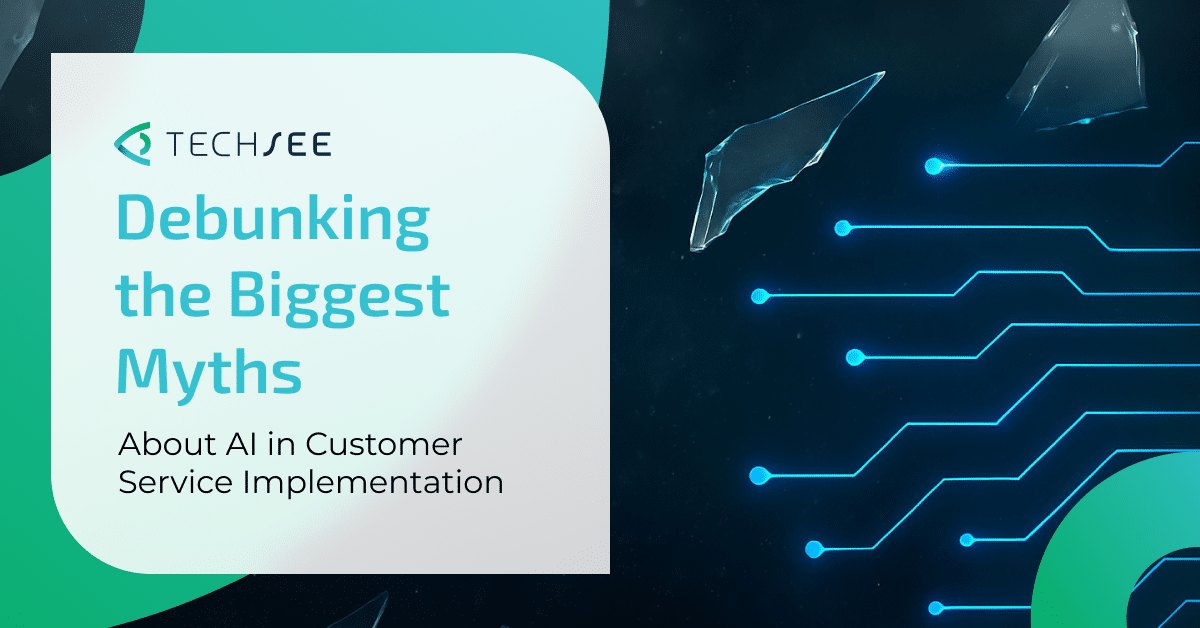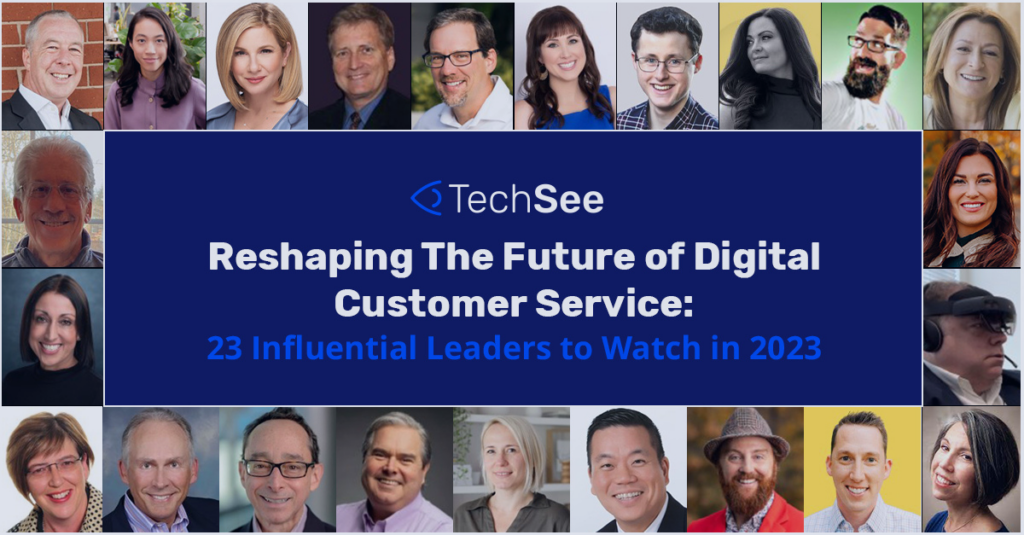Contents
- Debunking the Biggest Myths About AI Customer Service Implementation
- Myth 1: Artificial Intelligence (AI) Will Replace All Human Agents
- Myth 2: AI Should Focus on Tier 1 Volume Before Tier 2 Complexity
- Myth 3: Voice Comes First, Vision Comes Later
- Myth 4: In the Age of AI, Containment Is the Only Metric That Matters
- Myth 5: In the Age of AI, Customer Service Experience Is Only About Speed
- Myth 6: Agents Don’t Need New Skills in the Age of AI
- Conclusion
- FAQs: AI-Powered Customer Service
Debunking the Biggest Myths About AI Customer Service Implementation
AI was once an experiment in customer service; now, it is a top priority for service leaders. Yet despite billions invested, many projects still stumble. According to Gartner, 85% of AI projects fail to deliver business value. We hear in client conversations that the reason is often not the technology itself but misconceptions and repeated mistakes.
Many of these failures stem from common AI customer service mistakes that leaders unknowingly repeat. Leaders chase vanity metrics, delay visual capabilities, or underestimate the skills their agents will need. These myths create wasted investments, poor customer experiences, and stalled AI adoption.
We come across many AI customer service misconceptions in the market today. The good news is that companies can avoid them with the right approach. In this blog, we will discuss six of the most common myths about AI customer service implementation.
Myth 1: Artificial Intelligence (AI) Will Replace All Human Agents
The idea of an “agentless” contact center means lower costs and faster service. In reality, it doesn’t work. Complex cases like device failures and billing disputes can’t be solved by scripts or AI chatbots alone. They need empathy, accountability and context.
A recent survey found 78% of service leaders say AI works for simple queries but fails on complex ones. The result is many organizations that downsized too far are now reversing course.
We see contact centers rehiring humans to replace AI because service quality fell, and customer trust eroded. The future is not agentless. The future is human agents supported by AI that makes complexity manageable.
Myth 2: AI Should Focus on Tier 1 Volume Before Tier 2 Complexity
Many service leaders still believe AI should start with Tier 1: password resets, billing questions, and subscription activations. The logic is that these calls are high volume and therefore the best automation target. But this is a myth.
Tier 2 cases, connectivity failures, device malfunctions, and onboarding errors are fewer but far more expensive. They often trigger truck rolls costing $150–$200 each. Nearly 75% of consumers attempt self-service, but only 14% successfully resolve complex problems on their own.
The outcome is that organizations that only automate Tier 1 save seconds, while those that automate Tier 2 prevent hundreds of dollars in unnecessary costs. AI strategies for service leaders should prioritize complexity first. By using AI with a virtual assistant approach, leaders strengthen customer service operations, control expenses, and improve as per customer expectations.
Myth 3: Voice Comes First, Vision Comes Later
Implementation roadmaps often treat visual AI as a future phase after text and voice. On paper, this looks like a natural progression. In practice, it creates disconnected customer journeys. Humans do not develop this way; we see before we talk, and we talk before we read. Context comes first.
Yet customer service often flips the order, creating AI channels that can chat or speak but cannot solve questions like “why is my Wi-Fi weak in the bedroom?” without escalation. As per our experts, every truck roll avoided by visual self-service saves $150–$200.
Delaying vision is not a cost-saving step; it is a costly mistake. AI customer service implementation best practices include visual capabilities from day one, powering tasks like smart thermostat onboarding, Wi-Fi coverage mapping, and recall processing.
Myth 4: In the Age of AI, Containment Is the Only Metric That Matters
Containment is often reported as the defining success metric for self-service. It measures whether customers stayed in the channel rather than escalating. But containment is a vanity metric. It shows behavior in the moment, not trust or effectiveness over time.
Research shows that 77% of consumers have used a self-service support portal, yet many do not return when the experience is frustrating. The outcome is that containment looks positive on dashboards, while repeat calls and churn rise in reality.
Adoption is the stronger measure. Adoption reflects trust in customers who return because the channel worked for them. In fact, AI customer service implementation best practices focus on adoption and repeat usage, not containment alone.
Myth 5: In the Age of AI, Customer Service Experience Is Only About Speed
AI is often introduced with the promise of shorter calls and faster responses. Speed does matter, but speed without empathy or context only frustrates customers faster. A survey found that 42% of people who had a poor service experience reported disappointment, 43% reported unhappiness, and 41% reported anger.
The outcome is clear and fast, but poor service still fails. Best customer service AI automation practices must combine efficiency with quality. Plus, it must also consider the customer sentiment wisely. AI should reduce friction so customer service agents can focus on baggage handling, experience engineering, and next-issue avoidance. These are the levers that reduce churn and build loyalty.
Myth 6: Agents Don’t Need New Skills in the Age of AI
A dangerous misconception is that once AI handles routine work, agents can continue with the same skill set. The reality is the opposite. AI absorbs simple Tier 1 cases, leaving agents with more complex, emotionally charged interactions. Agents need new competencies to succeed. From what we hear in client workshops, the most important are:
- Baggage handling: acknowledging frustration and past attempts.
- Experience engineering: guiding conversations so they feel effortless.
- Value reinforcement: showing customers they made the right choice.
- Next-issue avoidance: solving adjacent problems before they happen.
AI customer service strategies that neglect agent training risk higher churn and lower customer satisfaction. Reskilling is the foundation of effective complexity management.
Conclusion
AI can transform customer service, but only if leaders see past the myths. It’s worth considering that Agentless AI fails and containment misleads. In short, speed is not enough; agents must reskill. Tier 2 is where costs are concentrated, and vision cannot wait.
Service leaders who embrace best practices adoption over containment, complexity over volume, and vision from the start will move AI from pilot projects to scaled transformation. Henceforth, they will turn AI innovation in customer service into measurable ROI and customer trust.
FAQs: AI-Powered Customer Service
What are the best practices for AI in customer service?
Align AI with business outcomes, measure adoption not containment, reskill agents for complex cases, focus on Tier 2 before Tier 1, and embed vision from the start. That’s a cost-effective and customer-centric way,
What should service leaders prioritize for AI in customer service?
Leaders should prioritize AI strategies that deliver measurable ROI: reduce repeat contacts, prevent technician dispatches, and empower agents with contextual insights. Leaders who chase vanity metrics or only focus on Tier 1 automation miss the point.
Why is adoption more important than containment?
Containment only shows if a customer stayed in self-service once. Adoption shows if they came back because it worked. Sustained adoption is trust, which is the strongest indicator of ROI and long-term value.
Why do agents need new skills?
As AI automates routine tasks, the remaining calls are more complex and emotional. Agents need skills like baggage handling, experience engineering, and next issue avoidance. Those skills help them manage complexity while AI provides automation support.
Why should vision be part of implementation from the start?
Vision provides the context that text and voice can’t. Visual AI lets customers install devices, map connectivity, and process recalls on their own. Delaying vision means unnecessary technician dispatches and higher costs.






